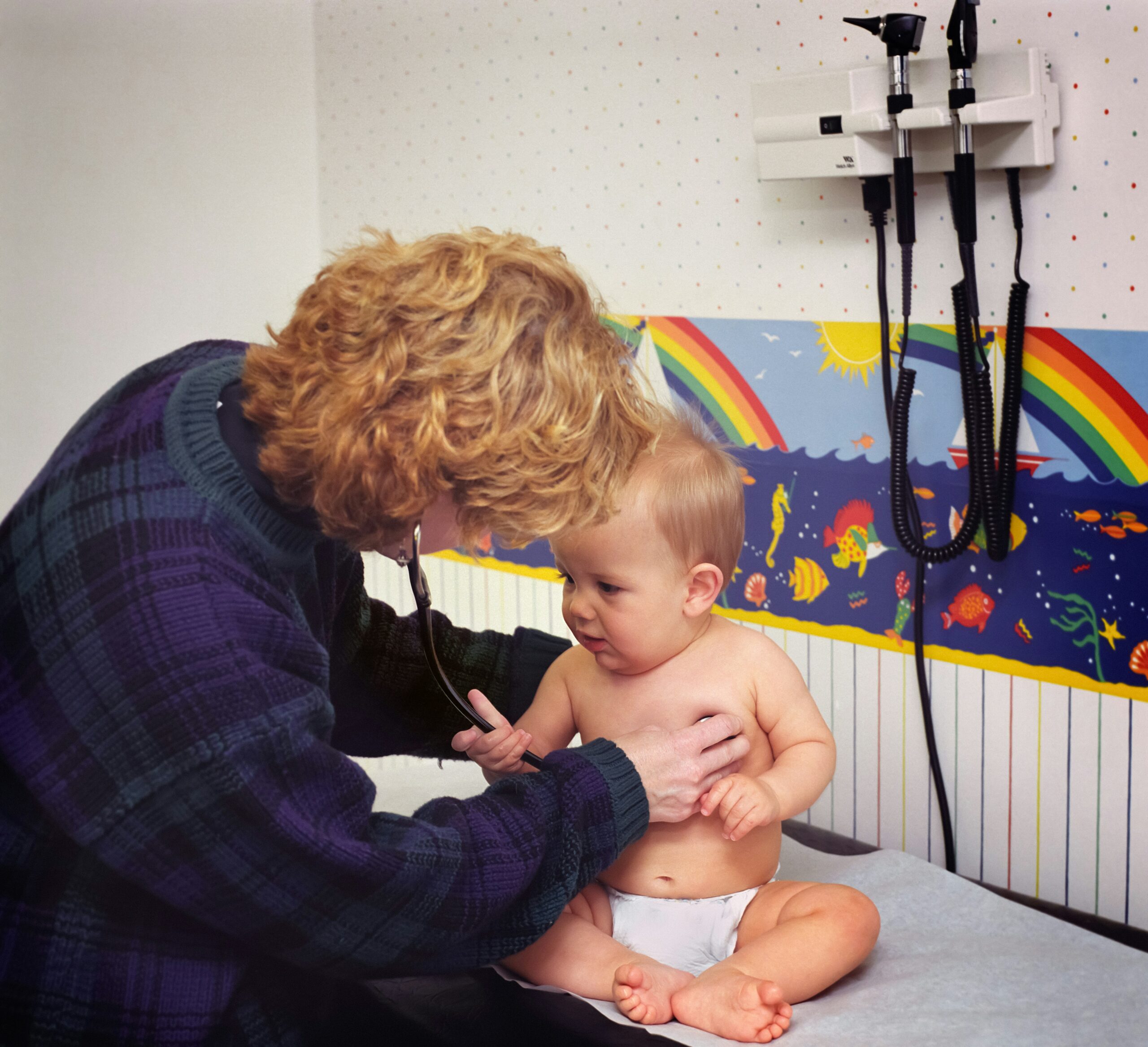From the very first cries echoing in the delivery room to the whirlwind of adolescence, questions multiply: Is this rash something to worry about? Should my child be growing faster? Could this cough hide something more serious? Doubts can be as persistent as sleepless nights, and sometimes it feels as though answers are always just out of reach. That’s where the pediatrician steps in—a specialized expert, an ally with both scientific depth and compassion, ready to support not just your child’s health but your entire parenting journey. But what exactly does the pediatrician do? How do their skills extend beyond the clinic? How can parents recognize when to consult, and what truly distinguishes the pediatrician from other healthcare professionals? As daily decisions about nutrition, sleep, vaccinations, or behavioral development unfold, understanding this essential role brings reassurance and real insight.
Understanding the Pediatrician’s Role
Is the pediatrician just the doctor you call when your child runs a fever? Far from it. The pediatrician is a meticulous observer—tracking physical growth, measuring development, and interpreting subtle signs that might escape even the most vigilant parent. Regular assessments don’t just chart height and weight; they involve the close examination of developmental milestones, evaluation of motor and sensory skills, and gentle inquiries into emotional well-being.
Consider just how varied a child’s needs are over time: A newborn’s vulnerability demands immunization discussions and feeding advice, while a preschooler’s learning challenges or unusual temper tantrums open avenues for assessing cognitive and emotional health. The pediatrician’s expertise intersects with psychology, diagnosis, treatment of both acute and chronic illnesses, and the day-to-day realities of family life. They explain complex medical terms in accessible ways, advocate for preventive care, and empower parents to make informed decisions even in moments of anxiety.
Every consultation becomes a partnership, where questions are welcomed, concerns never brushed aside, and guidance is always tailored—not just clinically, but personally.
Prevention and Early Detection: Beyond Treating Illness
You might wonder: Why schedule check-ups if my child seems healthy? Prevention is both a philosophy and a practice for the pediatrician. Each routine visit is an opportunity: Detect minor delays in speech or motor coordination, track trends in growth charts, and offer guidance on nutrition tailored to each stage. Subtle shifts—a decline in appetite, a persistent cough, transient behavioral changes—can be early indicators of more significant issues.
Immunization remains a keystone: not merely a list of scheduled shots but a real shield, discussed openly, schedule adjusted for individual medical histories (or even allergies). Screening tools—whether standard vision tests, hearing checks, or developmental questionnaires—frame early intervention. If a concern arises, the pediatrician swiftly coordinates evaluations: is it time for a specialist referral? Should further laboratory tests be considered? Each decision is weighed with care, always mindful of your child’s unique context.
Pediatrician or Family Doctor: Who Should You See?
A point of confusion: When to choose a pediatrician over a family physician? Both are pillars of primary care, but their medical expertise differs in focus. The pediatrician’s training delves deep into the physiology, behavioral development, and diseases specific to infants, children, and adolescents. They recognize the atypical presentations of infectious disease, understand nuances in growth disorders, and remain attuned to the fast shifts of the developing brain and body.
By contrast, family physicians provide broad-spectrum care for all ages. In everyday practice, many families value their holistic oversight, yet often rely on the pediatrician’s nuanced perspective—especially for complex, chronic, or rare pediatric conditions. Collaboration is frequent: health records act as bridges, fostering seamless dialogue and keeping every professional aligned.
Skills, Qualities, and the Human Connection
Technical proficiency? Indispensable. But the finest pediatricians possess something more: active listening, empathy, and a knack for demystifying medicine. They adapt their language—explaining fever management to a worried parent while soothing a frightened toddler with a gentle tone. Their support is holistic: Nutrition, sleep, hygiene practices, breastfeeding complications, minor injuries—no concern too small, no question ever “silly”.
Families might recall the pediatrician’s calm during a late-night phone call about a high fever, or their steady reassurance while decoding vaccination schedules. Communication means more than words; it means fostering trust, encouraging parental autonomy, and always creating space for open dialogue.
Where Pediatricians Practice: Diverse Settings for Every Need
The image of the white-coated pediatrician in a quiet office only tells half the story. Pediatricians practice across a spectrum:
- In the privacy of their clinic—where time is taken for individual check-ups
- In the busy pace of hospitals, overseeing emergencies or complex hospitalizations
- Within maternity wards, offering first assessments inches from the delivery suite
- In public health centers, breaking down geographical and financial barriers, seeking equity in access
And increasingly, pediatric care extends beyond walls. Telemedicine now allows families to access the pediatrician’s expertise from home, adjusting treatments, reviewing symptoms, and deciding when to come in person—always underpinned by security, confidentiality, and thoughtful triage. For infants or complex cases, clinical examinations remain indispensable, but digital follow-up tools expand reach and flexibility.
Specialized Pediatric Services and Subspecialties
Children are not small adults—their illnesses require tailored approaches. Some pediatricians pursue focused expertise: neonatology for the most fragile newborns, cardiology for congenital heart anomalies, endocrinology for metabolic and growth disturbances. Others integrate with multidisciplinary teams: speech therapists for communication issues, psychologists for emotional support, nutritionists when feeding proves challenging.
Certain conditions—rare diseases, chronic asthma, neurodevelopmental disorders—demand collaborative strategies. The pediatrician becomes a coordinator, a linchpin managing between disciplines, always with the child’s global well-being in sight.
Training and Continuous Learning: The Pediatrician’s Education
Ever wondered what it takes to become a pediatrician? The answer: an intensive journey marked by resilience, curiosity, and unflagging dedication. The pathway includes foundational sciences, a lengthy period of medical school, the rigors of a pediatric residency—often three years or more of rotations spanning outpatient, hospital, neonatal, and sub-specialist settings. After certification, many invest in further sub-specialization or embrace research, continually updating knowledge in response to advances in science and medicine.
Medical guidelines are dynamic—new vaccines, emerging diseases, changes in prevention protocols. The pediatrician’s commitment to lifelong learning ensures that families benefit from the latest evidence.
How Often Should Your Child See a Pediatrician?
Rhythms and routines matter. The typical schedule:
- Monthly visits throughout the first year—vital for monitoring growth, nutrition, early screening
- Every three months in the second year, capturing bursts of development and subtle transitions
- Annually after age two, or more frequently if concerns arise, chronic conditions exist, or the family needs support
Yet flexibility is key. Growing children, unique medical histories, and family contexts all shape the follow-up rhythm. Holding fast: the child’s health record, a living document, tracks not only immunizations and growth but also all assessments, milestones, and relevant findings. Always bring it—this portable communication tool streamlines every exchange, whether in person or via telemedicine.
Everyday Guidance: Feeding, Sleep, Behavioral Challenges
Care is not only clinical—it is pragmatic, daily, tangible. From infancy, questions about breastfeeding, formula, introducing solids, and handling picky eaters become routine. The pediatrician unpacks nutritional guidelines in practical terms, respects cultural variations, and adapts strategies.
Sleep issues? Frequent awakenings, night terrors, sudden changes—these too fall within the pediatrician’s advisory role. And as toddlers become preschoolers, new challenges surface: tantrums, separation anxiety, social integration at school. Instead of universal prescriptions, the pediatrician weighs science, individual temperament, and family philosophy, always encouraging strategies that foster resilience and healthy development.
Managing Illnesses, Emergencies, and Chronic Conditions
Childhood means unpredictability—fevers that appear overnight, falls from playground slides, allergies that provoke sudden rashes. In acute episodes, the pediatrician swiftly determines severity: Is this a benign virus, or does it warrant further testing? When is an antibiotic appropriate, and when is observation best? For ongoing conditions—asthma, diabetes, seizure disorders—the pediatrician crafts management plans, coordinates with specialists, and explains clearly (sometimes repeatedly) to ensure confidence at home.
Mental health, too, has come to the forefront. Anxiety, learning disorders, and behavioral shifts are approached without stigma, with the pediatrician guiding families to relevant resources and therapies as needed.
Choosing the Right Pediatrician for Your Family
Selecting a pediatrician is both a logistical and an emotional decision. What should you look for?
- Availability—how responsive is the clinic, especially during urgent needs?
- Communication—does the pediatrician listen? Are explanations clear?
- Approach—do you feel respected, even when your choices diverge?
- Practice location and telemedicine options—how easy is access, and are digital tools available if needed?
- Peer feedback—what do other families report? Reputation matters, but so does personal comfort
- Willingness to adapt—each family has unique situations; does the pediatrician embrace flexibility?
In the end, trust underpins everything: A space where no concern is dismissed, and advice is both evidence-based and compassionate.
The Pediatrician in the Broader Healthcare Network
Healthcare is rarely solitary. Pediatricians collaborate—partnering with nurses, therapists, allied health professionals, family physicians, and specialists. Information flows transparently when everyone shares priorities: safety, continuity, and optimal outcomes for the child.
Insurance and payment? Systems differ worldwide, but many public health programs cover scheduled visits, with telemedicine increasingly integrated into standard reimbursement. Public health centers narrow gaps for families challenged by cost or distance, while private clinics may offer tailored, more rapid access.
Innovation and the Shifting Landscape of Pediatric Care
Pediatrics evolves—responding to new medicines, technologies, and expectations. Digital health, smart electronic records, and virtual appointments are changing how families interact with healthcare. But at its heart, pediatric care remains relational, blending scientific rigor with empathy and tailored support.
Challenges multiply: physician shortages in some regions, the rise of complex chronic illnesses (from obesity to allergies to neurodevelopmental disorders), and heightened demands for proactive, accessible, and transparent care. Pediatricians are not just clinicians—they are health advocates, researchers, and educators, seeking equity and innovation for the next generation.
Key Takeaways
- The pediatrician is a dedicated specialist committed to supporting children’s health, growth, and well-being from birth through adolescence, weaving science and sensitivity into every encounter.
- Their expertise extends far beyond treating illnesses, encompassing preventive care, developmental monitoring, nutrition, immunizations, and emotional support.
- Training is extensive, constantly refined by scientific advances and new guidelines, ensuring care aligns with the latest best practices.
- Pediatricians work across multiple settings—clinics, hospitals, maternity wards, public health centers, and with telemedicine—offering flexible, comprehensive, and accessible care.
- Collaborative teamwork and coordinated management of chronic or complex conditions guarantee that every child receives individualized, evidence-based support.
- Early detection, detailed monitoring, and compassionate communication mark each consultation, empowering parents with both information and reassurance.
- Facing evolving public health needs and technological advancement, pediatricians innovate while safeguarding the central human relationship at the heart of care.
- For tailored advice, health questionnaires, and practical resources to support your family at every stage, you can download the Heloa app and access free, personalized health tools designed for parents.
Every child’s journey is unique—yet reliable guidance, open questions, and strong partnerships help families move forward, one consultation at a time.
Questions Parents Ask
What is the difference between a pediatrician and a pediatric nurse?
Pediatricians and pediatric nurses both care deeply about children’s well-being, but their roles differ. Pediatricians are doctors with specialized training in diagnosing and managing childhood illnesses, monitoring development, and creating treatment plans. Pediatric nurses, on the other hand, provide day-to-day care, offer support during procedures, and often serve as an accessible point of contact for families. Both professionals work closely together to ensure each child’s needs are fully addressed.
At what age should children stop seeing a pediatrician?
Typically, children and adolescents remain under the care of a pediatrician until they reach 18 years old, though this can vary based on each family’s comfort and specific health needs. Some young adults with ongoing conditions may continue with their pediatrician a bit longer, ensuring a smooth transition to adult healthcare. What’s most important is to choose the timing that feels right for your child and supports their ongoing health and development.
Can a pediatrician help with behavioral or emotional concerns?
Absolutely. Pediatricians are trained to support not just physical health but also emotional and behavioral well-being. If you’re noticing changes in mood, difficulties at school, or concerns about social interactions, reach out without hesitation. Pediatricians can listen, offer guidance, and, if needed, connect you with additional resources to best support your child’s emotional development. Remember, sharing these concerns is always encouraged—you’re not alone, and help is available.

Further reading:








